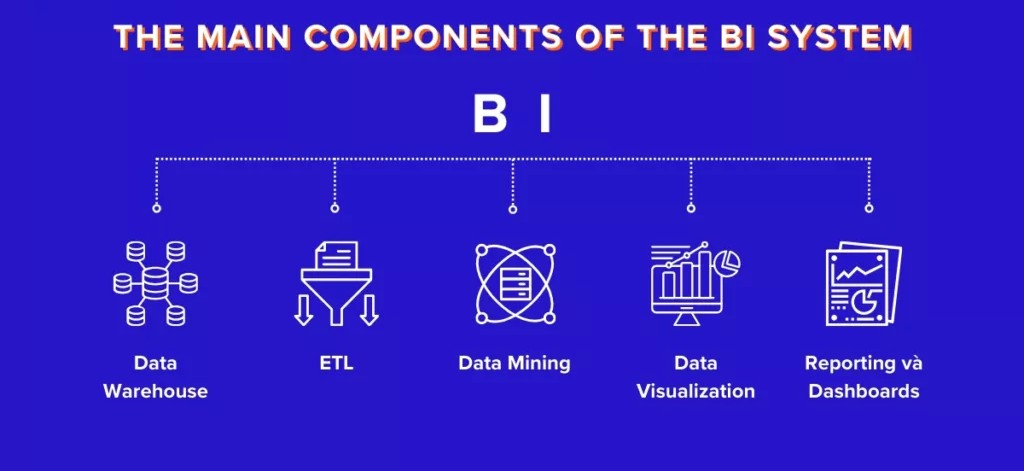Monthly Archives: March 2025

Business Intelligence
During the final phase of my university studies, I found myself facing numerous job opportunities, several companies reached out to me to manage websites, develop various applications, or work as a system administrator, however, none of these proposals truly aligned with my interests and professional aspirations. I felt that something was missing a spark that would make my work stimulating and meaningful.It was then that, through personal research, I discovered a field that immediately captured my attention: Business Intelligence (BI). This technical discipline fascinated me from the start because it wasn’t just about writing code or managing IT infrastructures, it was about something bigger giving value to data by transforming it into strategic and useful information for businesses. Business Intelligence is a field that allows for the collection, processing, analysis, and visualization of data to support business decisions, through specialized tools and advanced techniques, it is possible to extract valuable insights, optimize processes, and improve corporate efficiency. In other words, BI is not just about technology it bridges the gap between technical expertise and strategic decision making.Entering this field was a turning point for me, it allowed me to combine my passion for technology with my desire to make a tangible impact on how businesses operate and make decisions. Today, working with data and analytics, I truly feel like a part of a transformation process that helps people work better and more efficiently. At the beginning of my journey in BI, I had to make an important decision: should I start with Qlik or Power BI to gain experience and learn the trade? After careful consideration, I decided to dive into Microsoft’s Power BI suite, I underwent about six months of training, working alongside experienced professionals while handling projects for various clients.After gaining initial hands-on experience, I was assigned to more complex projects, collaborating with well-known companies such as Cattolica and Caritas for a few more months. Then came a major turning point Reply, a renowned consulting firm, brought me on board and placed me in a large scale project within the OVS Group. This has been my most significant professional challenge so far, and I am still part of this incredible journey today. At OVS, my initial project was to migrate all reports, analyses, and data extractions from SAP BO to the Microsoft suite, for an entire year, I worked tirelessly to recreate, modify, and refine these reports while granting users access within Power BI. This process required me to adapt to the company’s structure and comply with administrative constraints, in total, I migrated around 120 reports of various types. The following year, as Power BI became widely used at both operational (store level) and executive (board level) levels, I was given greater responsibilities. I developed an automated update structure using Azure and Power Automate, implemented role based row-level security via REST APIs, and set up monitoring for error detection in data flow updates.Throughout this period, I continued migrating legacy analyses to Power BI while creating new ones based on department requests. Over the past year, after establishing a solid reporting structure with approximately 250 accessible reports, I began focusing on e-commerce analytics. To streamline my work, I built a small data warehouse, which introduced me to functional analysis, three-tiered data structuring (bronze, silver, and gold), endpoint mapping, invoice management through dummy lines, and more leveraging Microsoft Fabric to facilitate these operations.One of the more complex and rare tasks I handled during this period was the migration of region and capacity settings, initially, Power BI was used by only around 500 employees; today, that number has grown to 3,000. I was also entrusted with the supervision of all activities within the platform, ensuring its proper use and maintaining administrative rights. The Current Landscape As of now, the system I manage consists of: 21 Power BI Apps 60 Workspaces 400 Reports 200 Datasets 3,000 Users, with 2,000 actively using the platform Row-level security applied across all reports Approximately 90% of the components have been designed, developed, and published by me, while the remaining 10% were created by external contributors for projects predating my tenure or for analyses requested by the non-Italian OVS IT division. My journey in Business Intelligence has been both challenging and rewarding. Through continuous learning and problem-solving, I have built a robust and scalable analytics environment that supports decision-making at all levels of the company. Looking ahead, I am eager to further refine these systems, explore new BI technologies, and continue driving data-driven transformation at OVS.

Freelance in Italy
In recent years, freelancing in Italy has experienced significant growth, more and more professionals are choosing to work independently to have greater flexibility and control over their careers. However, the Italian landscape presents several challenges: bureaucracy can be complex, taxation requires careful management, and finding consistent clients isn’t always easy. Despite these obstacles, freelancing is becoming an increasingly attractive option for skilled professionals, especially in fields where remote work is common such as Business Intelligence (BI), companies across industries are relying more on data analysis to drive strategic decisions, opening up new opportunities for BI specialists. If you’re considering starting a freelance career in Italy, it’s essential to understand how the system works. Here are some useful resources: How to open Partita IVA More Complete Guide If you are not italian In Italy, working as a freelancer means opening a Partita IVA (VAT Number), which is the equivalent of being a sole proprietor or self-employed professional in other countries. There are two main tax regimes to choose from: Flat-Rate Regime (Regime Forfettario) This is the simplest and most tax-efficient option for new freelancers, provided they meet certain requirements: Annual revenue limit: Cannot exceed €85,000 per year Taxation: Fixed at 15% on taxable income (reduced to 5% for the first 5 years for new businesses) No VAT application: Invoices do not include VAT Limited deductible expenses: You cannot deduct business expenses (such as software, hardware, training, etc.) Restrictions on collaborations: Cannot hire employees or be part of partnerships This regime is great for those starting out but may not be suitable if you have high expenses or expect to exceed the revenue limit quickly. Ordinary Tax Regime (Regime Ordinario) If your revenue grows or you need to deduct significant business costs, this regime is more appropriate: No income limit: Suitable for high earners Progressive taxation: Based on standard IRPEF (income tax) brackets, starting from 23% and going up to 43% VAT management required: You need to charge and pay VAT Full deductibility of expenses: Business costs (e.g., training, tools, office rent) can be deducted Complex accounting: Usually requires an accountant for proper tax management Choosing the right regime is crucial for optimizing your earnings, many freelancers start with the forfettario regime and switch to the ordinario regime as their business scales. Pro and Cons of Partita IVA Becoming a freelancer isn’t just about working independently it requires a completely different mindset and financial planning. Unlike an employee, you don’t receive a guaranteed salary at the end of the month, instead, your income depends on your ability to find and manage clients effectively. Here are the main changes you’ll experience as a freelancer: Variable income: Some months will be highly profitable, while others may be slower. Financial planning is essential.Tax management: You must set aside money for taxes and social security contributions (INPS).No paid vacations or sick leave: If you don’t work, you don’t get paid.Client acquisition is key: You need to invest time in networking and personal branding.Total flexibility: You decide which projects to take on, how to work, and when to work. Freelancing offers independence, but it’s not for everyone, the most successful freelancers are those who actively seek opportunities, market themselves well, and constantly update their skills. Business Intelligence with Partita IVA One of the best fields to freelance in today is Business Intelligence (BI), companies of all sizes need data analysis, reporting, and strategic insights to remain competitive, as a freelancer in BI, you can provide custom solutions that help businesses make data-driven decisions. High demand: Businesses actively seek professionals skilled in Power BI, Tableau, SQL, Python, and Excel to manage their data.Remote work potential: Many companies are open to fully remote BI professionals, expanding job opportunities even internationally.Diverse projects: You can work with startups, mid-sized businesses, or multinational corporations, gaining a variety of experiences.Competitive rates: Skilled BI freelancers can charge €300-€700 per day, depending on expertise and project complexity.Growing industry: Data-driven decision-making is becoming a priority across industries, ensuring long-term demand for BI expertise. A good start for a BI Freelancer Start with small projects: Platforms like Upwork, Fiverr, and Toptal can help you land your first clients. Build a portfolio: Showcase your work through case studies and a professional website. Expand your network: Join LinkedIn groups, attend BI webinars, and engage with professionals in the industry. Stay updated: New tools and technologies emerge regularly continuous learning is key. If you have a strong background in data analysis and visualization, freelancing in Business Intelligence can be a highly profitable and satisfying career move, many professionals start freelancing while still employed, testing the waters before going fully independent.
